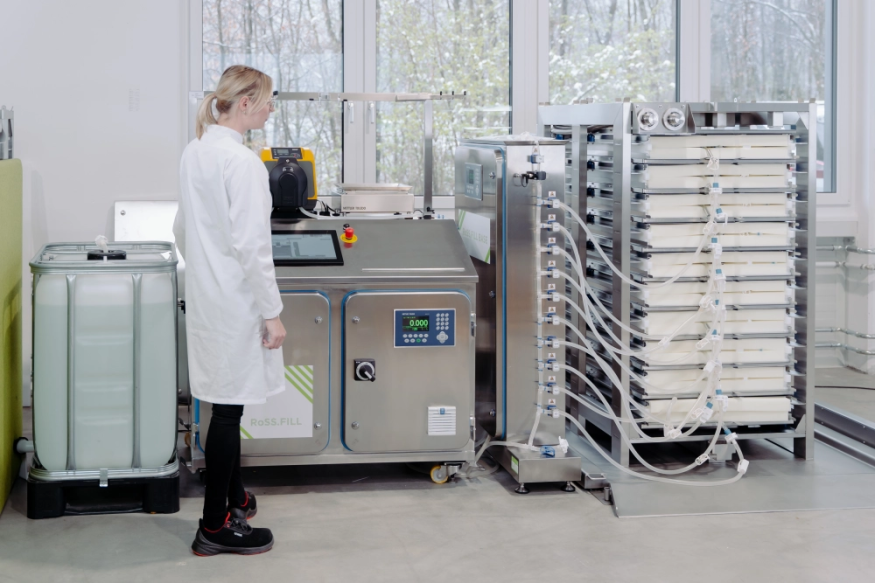Antibody Drug Conjugates (ADCs) have emerged as a promising class of therapeutics in the fight against cancer, offering targeted delivery of cytotoxic payloads to tumor cells while sparing healthy tissues.
This article provides an examination of the evolution of ADCs from conceptualization to clinical application. Additionally, we'll explore the challenges encountered with ADCs and their toxicity.
Safety is paramount, as well as ensuring the well-being of patients and providing a secure environment in ADC development and manufacturing. Neglecting the toxicity of ADCs and failing to handle them with care can pose serious risks to both patients and professionals involved in their production and administration.
What Are ADCs?
ADCs are a class of targeted cancer therapies that combine the specificity of monoclonal antibodies with the potency of cytotoxic drugs. These drugs are designed to selectively bind to cancer cells, delivering a toxic payload directly to the tumor while sparing healthy tissues. ADCs have shown promise in treating various types of cancer, offering improved efficacy and reduced side effects compared to traditional chemotherapy. Their development represents a significant advancement in precision medicine and has the potential to revolutionize cancer treatment.
The Birth of Antibody Drug Conjugates

ADCs originated from the convergence of advancements in monoclonal antibody technology and cytotoxic drug development. Early experiments in the 1960s laid the groundwork for the concept of utilizing antibodies to deliver cytotoxic drugs to cancer cells. Key milestones, including the development of the first ADCs entering clinical trials in the 1990s, paved the way for subsequent research and innovation.
The first practical application of Antibody Drug Conjugates (ADCs) was gemtuzumab ozogamicin, which received FDA approval in 2000 for the treatment of acute myeloid leukemia. By 2022, ADCs had expanded their usage and were being investigated for potential applications in other diseases.
Several ADCs have achieved remarkable success in clinical trials and have been approved for the treatment of various malignancies. Drugs such as Brentuximab Vedotin and Trastuzumab Emtansine have demonstrated impressive efficacy in Hodgkin lymphoma and HER2-positive breast cancer, respectively, improving patient outcomes and quality of life.
Preclinical Development
The journey of ADCs from bench to bedside begins with rigorous preclinical studies aimed at optimizing their design and efficacy. Researchers select target antigens overexpressed on cancer cells and explore various cytotoxic payloads to maximize therapeutic benefit. Additionally, the development of stable linkers capable of releasing the payload within the tumor microenvironment without causing systemic toxicity is of great importance.
Clinical Trials and Regulatory Approval
The transition from preclinical development to clinical trials represents a critical phase in the validation of ADCs as viable cancer therapies. Phase I trials focus on establishing safety and determining the maximum tolerated dose in human subjects. Subsequent Phase II trials assess the efficacy of ADCs in specific cancer populations, while Phase III trials compare ADCs with standard treatments in large-scale studies. Regulatory approval by agencies such as the FDA signifies a significant milestone in the journey of ADCs from experimental agents to mainstream cancer therapeutics.
Success Stories and Setbacks
However, challenges and setbacks, including off-target effects, resistance mechanisms, and manufacturing complexities, underscore the need for continued research and innovation in the field of ADC development.
Challenges and Limitations
Antibody drug conjugates (ADCs) stand as a beacon of hope in the realm of cancer treatment. Yet, the journey of ADC manufacturing is riddled with challenges, foremost among them being the delicate balance between efficacy and safety.
Challenges and setbacks include off-target effects, resistance mechanisms, and manufacturing complexities. A primary concern revolves around the potential toxicity of ADCs, which are engineered to be highly potent, targeting cancer cells with precision. The toxicity inherent in ADCs poses significant risks during manufacturing, administration, and patient consumption.
Nevertheless, the same potency that renders them effective against tumors also heightens the risk of adverse effects on healthy tissues if mishandled. Managing this toxicity requires a delicate balancing act, necessitating careful dosing and monitoring to minimize harm to the patient.
Further challenges arise in the development and manufacturing of these drugs. Ensuring the safety of personnel and the environment is crucial, requiring strict adherence to rigorous manufacturing standards such as current good manufacturing practices (cGMPs).
Scalability further complicates matters, necessitating the implementation of modular systems and innovative technologies to facilitate the transition from lab-scale to commercial production. Thus, cost-efficient and safe solutions for manufacturers are imperative to enhance the commercialization of ADCs.
Single-Use Technology as a Solution for ADC Manufacturing

Solutions are already in place, with single-use technologies increasingly integrated into manufacturing facilities. These technologies offer scalable and efficient processes while minimizing product loss and contamination, transforming ADC development to make it safer and more efficient.
Single Use Support provides customized solutions for bioprocessing, with a focus on products and services tailored to the needs of ADC manufacturers. These single-use solutions encompass assemblies, bags, and specialized platform systems designed for the safe handling and fluid transfer of ADCs. This comprehensive approach ensures the protection of ADCs throughout the manufacturing process, from filling to freezing, safeguarding their integrity and efficacy.
Control over freezing and thawing processes is crucial for preserving the integrity of ADCs. Freezing is often utilized during manufacturing to maintain stability and potency, preventing the degradation of drug molecules and antibody components. By carefully controlling the freezing process, manufacturers ensure that ADCs retain their therapeutic efficacy and safety from production to patient administration.
By addressing key challenges in manufacturing and ensuring the integrity of ADCs through specialized solutions, researchers are poised to significantly impact the landscape of oncology, promising brighter prospects for patients battling cancer.
© 2025 ScienceTimes.com All rights reserved. Do not reproduce without permission. The window to the world of Science Times.










